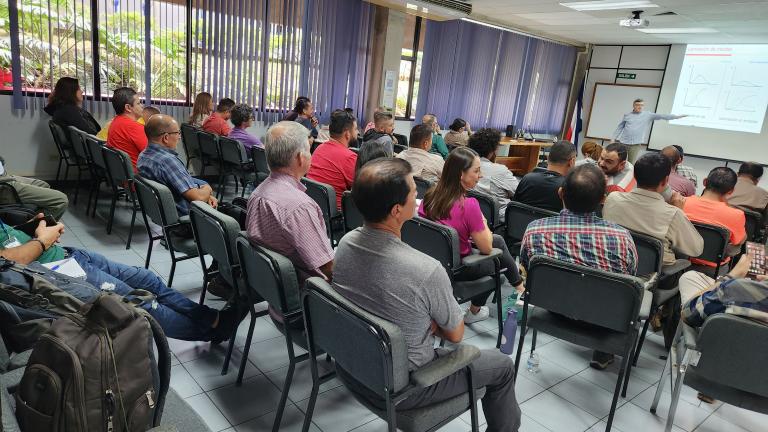HydroSOS Central America

Background
Central American countries have been progressively improving their capacities to generate operational seasonal forecasts. This has been developed mainly through the consolidation of the Regional Climate Outlook Forum (CACOF) coordinated by the Regional Committee for Hydraulic Resources - CRRH (also the implementing partners for this project) whose board of Directors is composed by the Directors of the NMHSs of their member countries. The CACOF has become well recognized by the Central American Integration System and is well connected with the development sectors of Central America. The outcomes of the CACOF, which delivers the seasonal forecast three times a year, are highly expected and valued by a wide range of users and are used for planning and prevention purposes. For the past four years, the Central American Hydrological Outlook Forum (CAHOF) has been operating in parallel to the CACOF. However, although the CAHOF has made progress in producing seasonal hydrological forecasts, methodological, coverage, and quality problems persist, which become evident when validating the forecast products generated. Even so, this process has enabled a fluent interaction between climatologists and hydrologists in the region and has evidenced several operational gaps related to hydrological monitoring, data management, modelling and forecasting capabilities at different time scales.
At the national level, there are very asymmetric developments from country to country, but also a diversity of installed capacities and expertise throughout the sub regions US, Canada and the rest of RA IV. This provides a suitable scenario for a cost-efficient contribution from WMO that could trigger high-impact developments in operational hydrology in the region, contribute to WHOS and HydroSOS, and lay the foundations for future long-term projects in Central America, and their replication in the Caribbean region and others in the world.
Activities
In order to bring the capacities of Central American countries to a similar level, a series of trainings were offered by WMO in the seven countries, namely Belize, Costa Rica, El Salvador, Guatemala, Honduras, Nicaragua, and Panama. The capacity development activities consisted of the following four areas:
- hydrological observation and instrumentation
- data management
- hydrological modelling
- easonal hydrological forecasting
The capacity development activities consisted of virtual and face-to-face modalities. For the virtual modality, Moodle Courses were developed and offered by the WMO Regional Training Centre - Facultad de Ingeniería y Ciencias Hídricas (UNL, FICH). The face-to-face modality consisted of a series of in-country courses hosted by the NMHSs and supported by experts from RA III and IV. This activity is considered to have benefited from a successful South-South cooperation with Institutions and experts from Latin America.
The main partner for this activity is Central America's Regional Committee for Water Resources (CRRH).
The trainings were delivered to 320 experts from the seven Central American countries in 22 training sessions, in addition to 158 experts involved in regional technical discussions.
MeteoWorld Article on this activity
Lessons learned from this activity will be soon made available here.
Next steps
From the trainings, participants and trainers identified gaps for a comprehensive activity to further activities on hydrological data management and enhancing sub-seasonal to seasonal prediction. WMO is exploring with regional partners on how to close those gaps.
